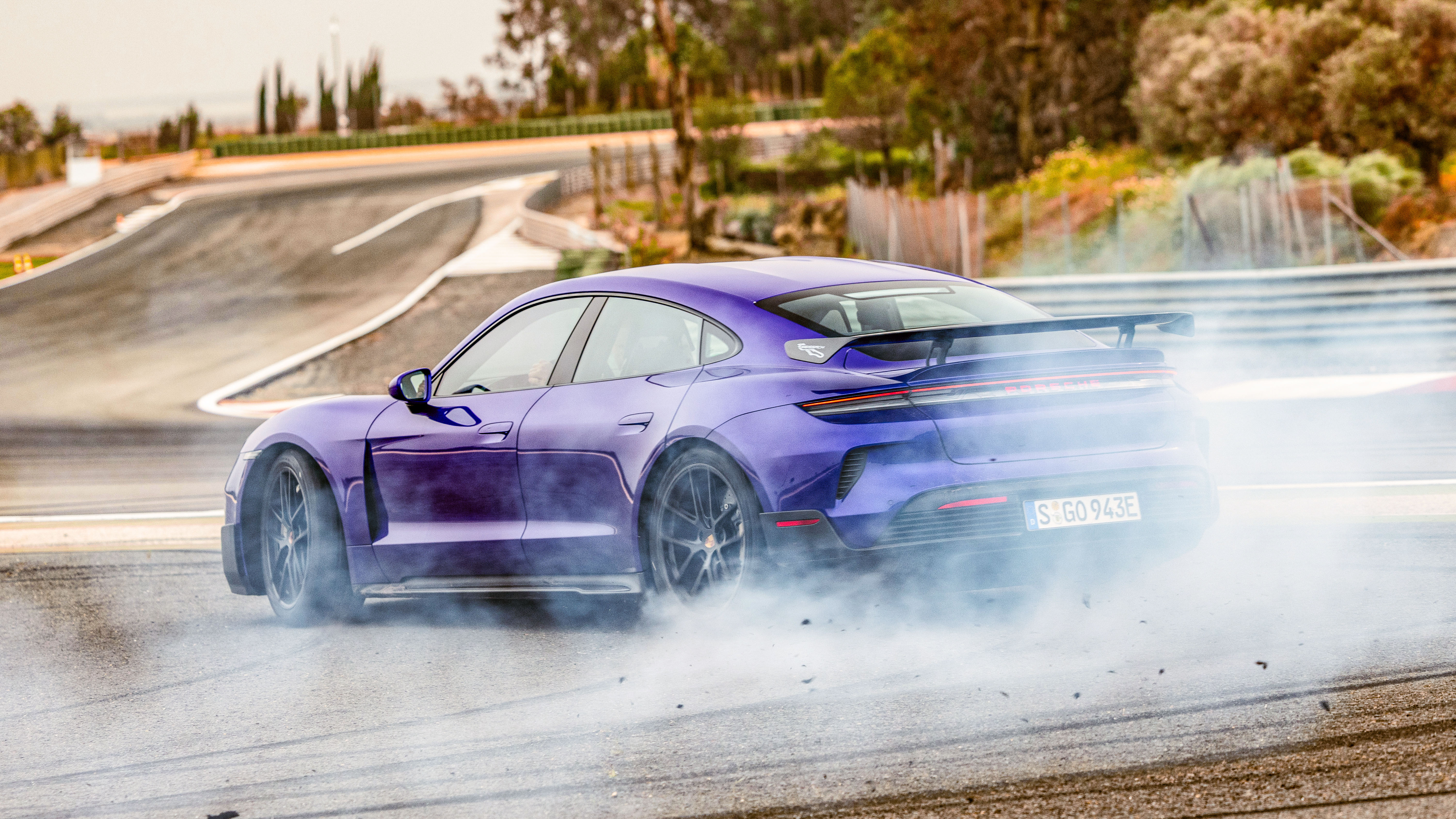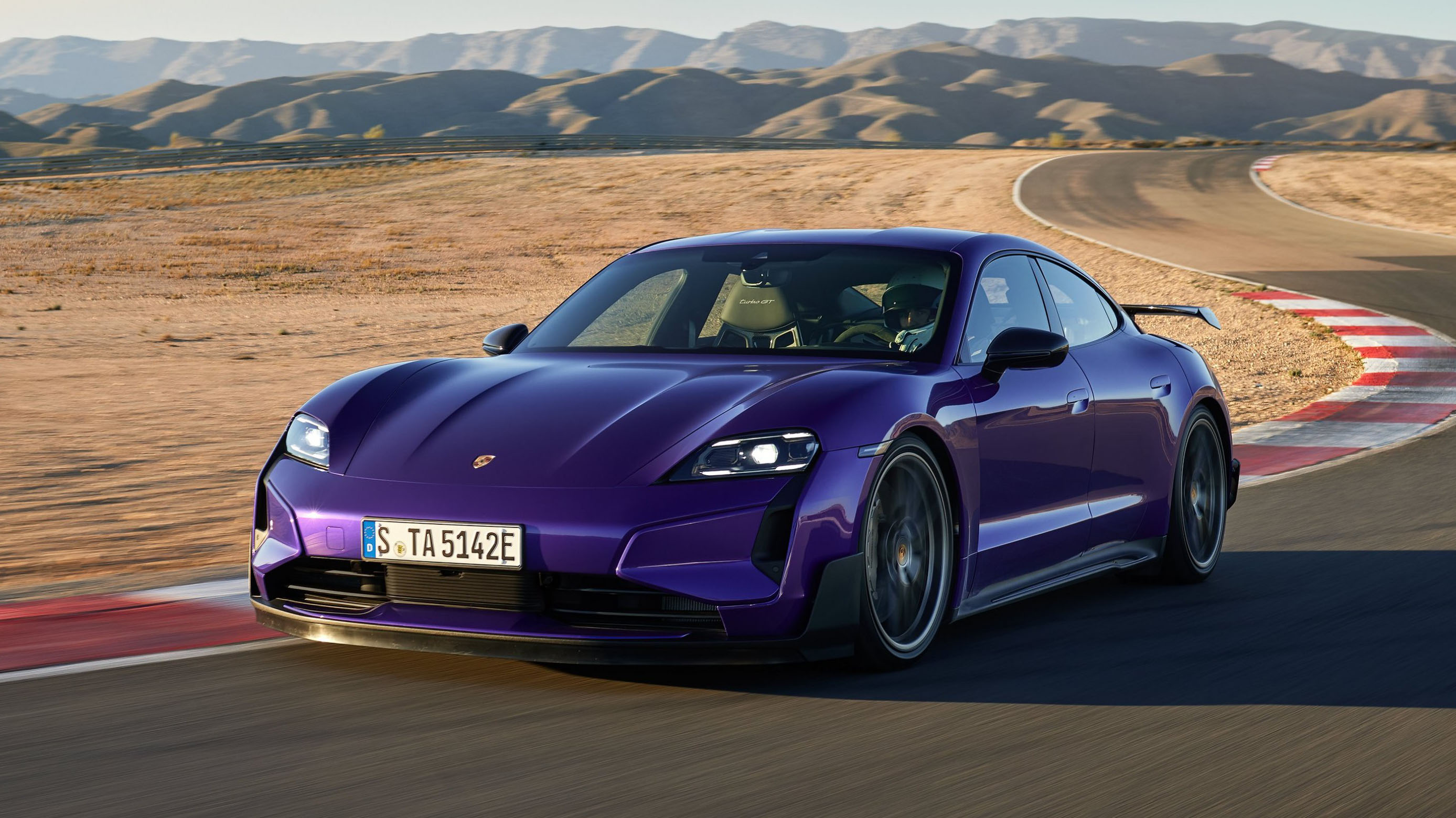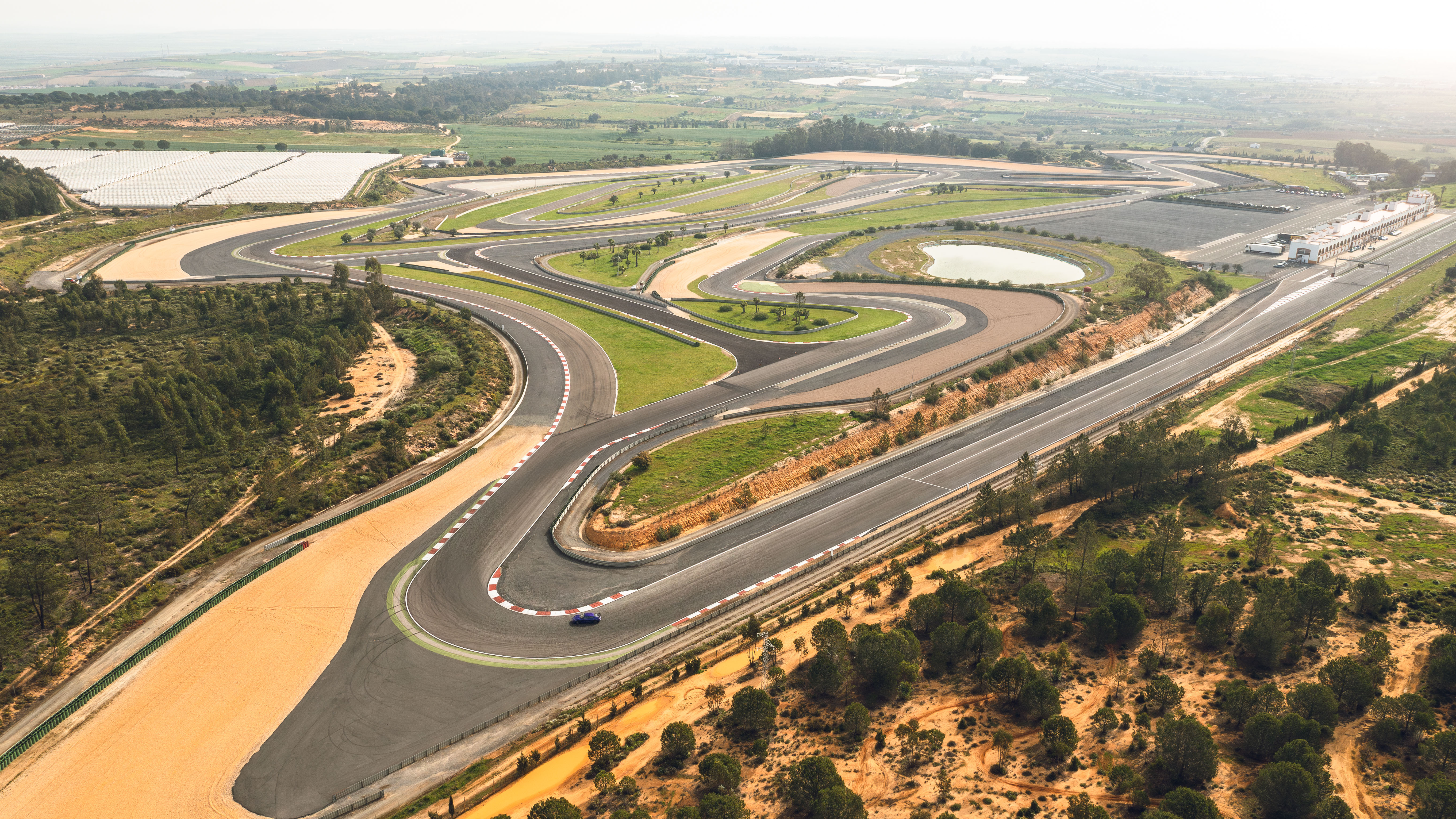
Flat out on track in the Porsche Taycan Turbo GT
The Taycan has always been quick, but Porsche just took things to a whole other level
As elephants in the room go, this one is really very elephantine. There is talk about having lightened it but the Porsche Taycan Turbo GT is still waaaay heavy. So if you wanted to make a track car, you surely wouldn’t start with a Taycan. Yet Porsche chose to let us loose on a track. Just as in the past it has bid us try its fastest Cayennes and Panameras on track, and they’re similarly weighty. At least the Taycan is lower than they are, and it accelerates like a firework. (Oh and to be fair, actual savannah elephants can be up to eight tonnes.)
I’m with Lars Kern, who has wrestled it around the Nürburgring Nordschleife in a scant seven minutes, seven and a half seconds. No four-door has gone faster, however powered. But we need to avoid the use of the word ‘saloon’ because in service of weight loss the GT, at least the version with the Weissach Pack which is what broke the record, doesn’t have a back seat.
The two seats remaining came from the 918, carbon-fibre corsets that clamp you without much regard to comfort. You can hear the whining of the gears in the rear two-speed transmission because there’s less sound-deadening material and the absent rear seat isn’t absorbing any, and besides Porsche went to the trouble of doing a new, stronger and inevitably noisier gearset just for the Turbo GT. On top of the motor is a brand new electrical inverter, capable of passing 900A instead of 600. So, more power because more current, and more strength to deploy it. These engineers spent big money going deep down the rabbit hole.
Photography: Porsche
About 20 times on a Nordschleife lap, the fast driver pulls the right-hand steering paddle. That’s Attack mode. It liberates another 163bhp for 10 seconds, provided temperatures and state of charge are in their windows. That takes the total to a boggling 1,019bhp. Can’t imagine ever needing that extra helping away from a track, but dividing the power between foot and finger makes the accelerator pedal less twitchy. Porsche is usually modest but says Attack mode and launch control together will take you from 0–62mph in 2.2 seconds.
Easy for you to read; hard for me to do. It genuinely is uncomfortable, a fairground kick-weeeeee. Tense your muscles and nerves, hold the pedal and it just keeps gobbling velocity to 120mph and beyond. EV acceleration usually softens after motorway speed, but not here. You just hear the gearbox-whine pitch drop as it upshifts and you’re propelled madly onward – 4.4 seconds from zero to 100, 6.4 to 125. Which makes the the 918 Spyder’s claimed 7.2 look sluggish.
In the vernacular of any GT Porsche, it’s lighter and has had aerodynamic work. Overall 75kg has been carved out of a Taycan Turbo S, via the rear seat loss, removal of a mobile rear spoiler and replacement by the fixed carbon-fibre wing, use of the same material for the rear bulkhead and seat shells, lighter wheels, thinner glass. Also the door over the recharging socket is no longer motorised – useful saving or token gesture, you decide. The aero differences are more significant. There has been underfloor work as well as the flicks and wings that you see.
In a quick corner the Turbo GT Weissach Pack will be a staggering 15mph quicker than the Turbo S, taking it to a maximum lateral grip of 2.0g. Mind you the drag coefficient is 0.31 versus 0.22 for the Turbo S, meaning that aerodynamic efficiency isn’t very impressive and there’ll be a definite motorway range hit. By the way you can have the same mechanical setup but keep the rear seat and mobile wing by ordering a Taycan Turbo GT without the Weissach Pack.
The suspension is a reworked version of the Porsche Active system under this year’s top models of Taycan and Panamera. I’ve got to simplify for reasons of space, but know mostly that the car’s springs are simple airbags that do nothing but passively support the weight when nothing’s happening. Every time a wheel moves up or down, it’s being pulled or pushed by a hydraulic actuator. There’s one for each corner of the car, and they also replace the dampers and anti-roll bars.
Sensors in the wheel hubs, the suspension itself and body all feed a processor that builds up a real time picture of the bumps and dips under each wheel. You too can do it: stand on a wobbling platform, shut your eyes and you can still operate your leg muscles to keep your head steady. So the Taycan’s body can be kept level, which is good for comfort, and also the vertical force on the tyres remains pretty much constant, which is good for grip and control.
In Sport or Sport Plus modes, the Taycan organises itself so there is no roll, keeping each tyre vertical, which maximises contact patch. The hydraulics negate roll but allow pitch and dive, to the benefit of traction and braking. They also lower the ride height.
Rather more spectacularly, in the normal Road mode, once you’re above 30mph it banks into the bend – the opposite of roll. Like a bike or aircraft. It means everyone is held more comfortably in their seat.
Because the system can quickly lift a wheel up into the body or push it down, it copes amazingly well with big bumps and dips. On the road, that means comfort over the perturbations visited on us by local councils to whom we refuse to give enough tax to do any resurfacing. On the track, it means riding kerbs with spectacular fluency.
Top Gear
Newsletter
Thank you for subscribing to our newsletter. Look out for your regular round-up of news, reviews and offers in your inbox.
Get all the latest news, reviews and exclusives, direct to your inbox.
Even so, it’s complex and heavy. I asked Kern why they didn’t just use stiff springs and firm dampers for this RS version. He said this had been his intuition too. Initially he felt vindicated. “The first time I tried it I ******* hated it.” But they’re Porsche engineers. They made an SUV handle. They made this work too, and he says this final version grips more strongly, is more consistent to drive and less hard on the tyres than if it had a ‘normal’ suspension – which would also be unbearably hard on the road or even a lumpy track like said ’Ring. I’m asking him questions as he drives me round the Monteblanco circuit in Spain – long, with some testing cambers and a brave curving crest. If holding a conversation is slowing him down, it isn’t by much.
My turn now. As I say, the acceleration is ridiculous. Launch control is an easy procedure, and because it’s four-wheel drive and stable all you need to do really is sit back and marvel. Anyway, the crazed longitudinal g gives you no option but to sit back.
Corners are metaphorically similar. You aim the steering and the car sorts things out. The suspension is levelled, the kerbs are absorbed, the torque is vectored. Sorry to use passive language, but the experience, given you’re strapped into a 1,000bhp machine, really is a trifle sanitary. Yet marvellous at the same time. The absence of pitch, squat and roll is bizarre, but a big advantage in positioning the car. And because it manages the weight transfer so well, you don’t even need a particular finesse to drive it. The steering too is progressive and wonderfully weighted. But lifting or mashing the accelerator mid-corner doesn’t bring much change of attitude.
The aero is doing its thing. Over that fast crest, the confidence is really something: you expect the car to keep high as the road drops, but instead you just follow the surface. The invisible hand is there to catch you, wearing a wicketkeeper’s glove. The brakes never let you down, but are a little odd – progressive at first, but when you really jump on them they seem almost too brutal. You’ve got about 600bhp of regeneration, but once that’s used up and the calipers clamp the carbon-ceramic discs, you really are asking for such serious force that the boundary between these states isn’t as progressive as I’d want.
I normally dislike ‘challenging’ track cars, knowing that my skills aren’t up to being challenged. But this is the opposite, a silent anodyne rocketship, and it has me slightly befuddled. I ask Kern to do some slidy cornering photos, if indeed it’s possible. This car doesn’t want to move around much. Ah, he says, try the other tyres.
It genuinely is uncomfortable, a fairground kick-weeeeee
Pirelli has developed two P Zero types just for this car, an R which I was on so far, and a Trofeo RS. The R has two carcasses to bear the weight, and many tread compounds to work well in wet and dry, and to absorb noise because you do hear the tyres more in any EV, absent combustion noise. The Trofeo RS is similar in carcass but uses motorsport compounds, designed for a quick warm-up and consistency over its life. To use it on the road would be legal but a bit daft.
But my, on the track it makes the car come alive. There’s more grip in the front wheels, and it has less need for it to meet autobahn high speed, lane change stability tests. Quite so: you feel it in the first bend, the nose sniffs into the apex, the car yielding up so much more communication and ready to be played a little (or if your name’s Kern, a lot) at the back via the accelerator. There’s so much more connection between you and the tyres, and the tarmac. Switching off, or at least quelling, the stability control is suddenly worth doing – not just for the chance to be spectacular or faster, but to feel the car doing its stuff.
Has Porsche suddenly made an electric 911 GT2 RS? Nope. It won’t excite that crowd at all. Has it made it as a profitable entry ticket to the waiting list for the production of the electric Mission X hypercar? The evidence is purely circumstantial. Where’s the rationale for a four-door, two-seat, electric track day car when few tracks have the chargers? Only that it sure is an achievement, and I’m sitting here waiting for the trickledown.
Trending this week
- Car Review
BMW iX3











